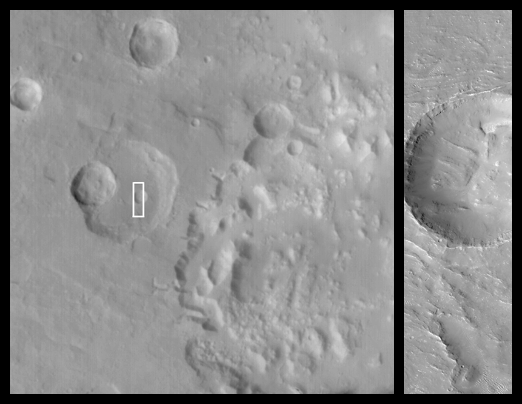
Peering down into craters offers Mars Global Surveyor (MGS) Mars Orbiter Camera (MOC) scientists an opportunity to examine one of the few landforms that Mars shares in common with the other planets and moons of our Solar System.
The picture on the left (above) is a MOC context frame taken at the same time as the MOC high resolution image on the right. The white box on the left shows the location of the high resolution view. The high resolution image was targeted on a 3 kilometers (1.9 miles) wide impact crater on the floor of a larger crater in the Nepenthes Mensae region (near 3°S, 239°W). The context image is about 115 km (71 mi) across, the high-resolution image is 3 km (1.9 mi) across, and both are illuminated from the left/lower left.
The 3 km diameter crater in the MOC image on the right is three times wider than the famous Meteor Crater in northern Arizona, USA. The high resolution image shows many small windblown drifts or dunes in the low areas both within the crater and outside on the surrounding terrain. Some portions of the crater's walls exhibit outcrops of bare, layered rock. Large boulders have been dislodged from the walls and have tumbled down the slopes to the crater floor. Many of these boulders are bigger than school buses and automobiles.

